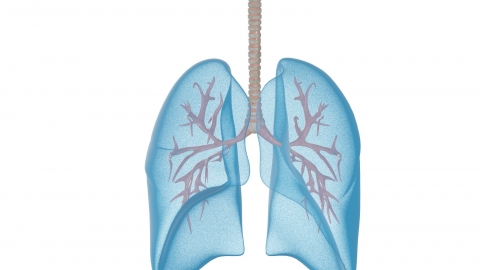What are the causes of secondary fungal lung infections?
Generally, the main causes of secondary pulmonary fungal infections include aging, poor nutritional status, long-term use of broad-spectrum antibiotics, chronic lung diseases, and diabetes. If symptoms such as coughing, sputum production, or fever occur, it is recommended to seek timely medical treatment at a qualified hospital. Detailed explanations are as follows:
1. Aging
With increasing age, immune system function gradually declines, and the respiratory mucosa's defense capacity weakens, making the body more susceptible to fungal invasion and leading to secondary pulmonary fungal infections. A balanced diet rich in vitamins and minerals should be emphasized in daily life.
2. Poor Nutritional Status
When the body remains in a state of insufficient nutrient intake or absorption disorders for a prolonged period, synthesis of immune cells is impaired, resulting in weakened immune function that cannot effectively resist fungal invasion, thus increasing the risk of secondary pulmonary fungal infections. Dietary adjustments should be made to ensure adequate intake of nutrients such as proteins, carbohydrates, and fats.

3. Long-Term Use of Broad-Spectrum Antibiotics
Prolonged use of broad-spectrum antibiotics such as cefoperazone sodium and sulbactam sodium injection, piperacillin sodium and tazobactam sodium for injection, and azithromycin dispersible tablets can disrupt the normal balance of microbial flora in the body, inhibit the growth of beneficial bacteria, and lead to excessive fungal proliferation, thereby causing secondary pulmonary fungal infections. Antibiotics should be strictly used according to the doctor's prescription, avoiding self-medication with prolonged duration or increased dosage.
4. Chronic Lung Diseases
Chronic lung diseases such as chronic obstructive pulmonary disease (COPD) and bronchiectasis can damage lung structure and function, reduce the respiratory tract's ability to clear foreign substances, and allow fungi to easily colonize the lungs and cause infection. The risk of infection increases with disease severity. Active treatment of underlying diseases is necessary, and medications such as budesonide-formoterol powder inhaler, tiotropium bromide powder inhaler, and salbutamol aerosol should be used under medical guidance to alleviate pulmonary symptoms.
5. Diabetes
Diabetic patients in a long-term hyperglycemic state experience suppressed phagocytic function of white blood cells, reducing the body's ability to fight infections. Additionally, a high-sugar environment promotes fungal growth and reproduction, making secondary pulmonary fungal infections more likely. Poorer glycemic control correlates with a higher risk of infection. Blood sugar levels should be strictly controlled, and medications such as metformin hydrochloride tablets, insulin injection, and glimepiride tablets should be taken according to medical advice.
In daily life, it is important to maintain good indoor air circulation by regularly opening windows for ventilation and avoiding long-term exposure to damp environments. Personal hygiene should be emphasized, including frequent handwashing and avoiding touching the mouth and nose with unwashed hands. Avoid visiting crowded and poorly ventilated places to reduce exposure to fungi. Regular pulmonary checkups, especially for individuals with underlying diseases, should be conducted to ensure early detection and treatment.








